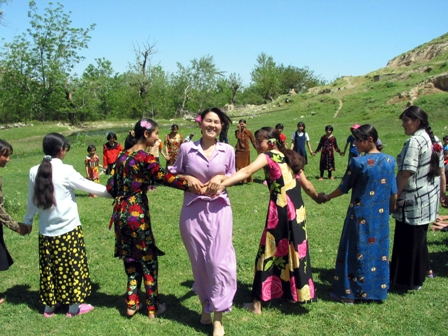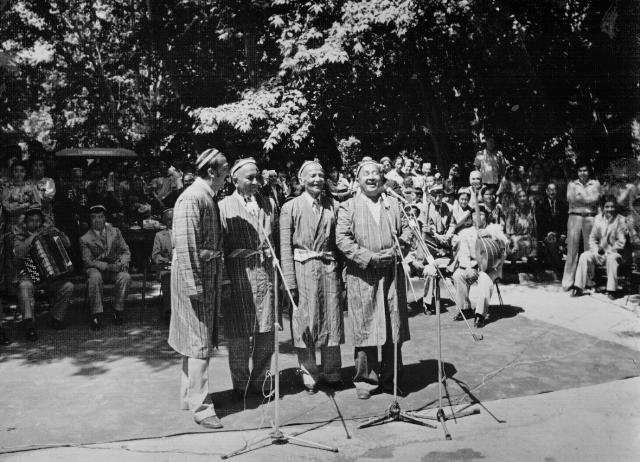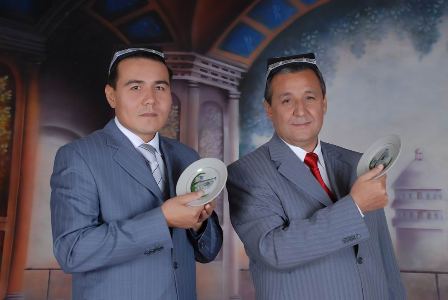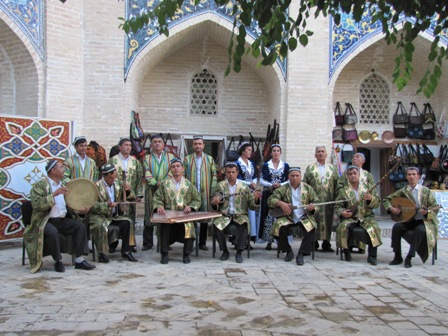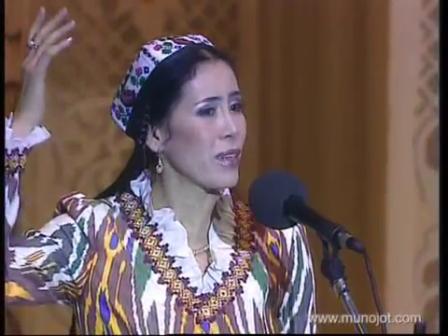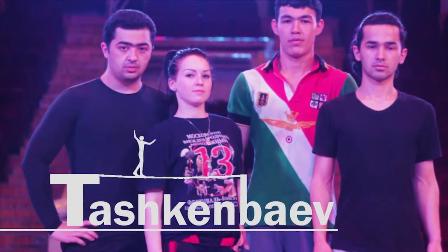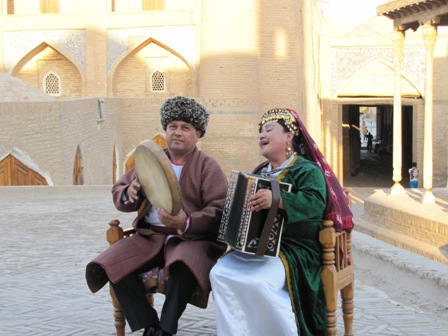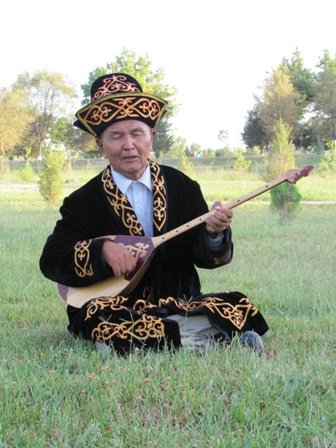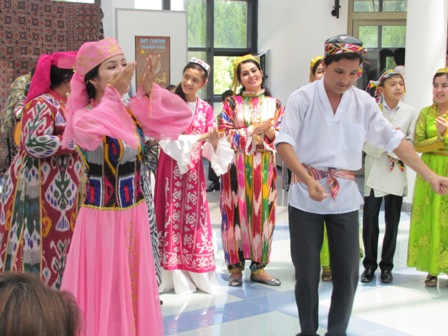Qarsak
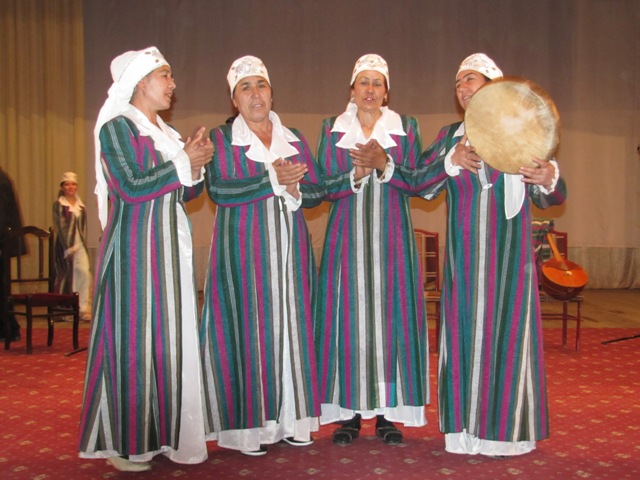
Domain: Performing Arts
Index Number: 02.04.02
Uzbeks, who represent one of the nations of the world, have very ancient cultural traditions. These traditions evolved already in antiquity, and since then constantly developed and changed. As a result of this, significant examples of folklore art emerged, that are distinguished by verbal nature, mass character and locality. Each district and each region of Uzbekistan attracts with its distinct genre system as well as peculiarities in performance styles. One of such genres is qarsak, a singing and dancing genre, a certain type of folk game, which was spread in Jizzakh, Samarkand, Kashkadarya and Surkhandarya regions in the past.
Qarsak (literally, "handclap") is a widespread and popular song genre, a song cycle and folk dance of Uzbek and Tajik peoples of Uzbekistan. It currently represents musical and dance traditions of Samarkand. Qarsak, in the past, was a song performed by men in a circle, which was accompanied by playing on doira, handclaps and dances. Poetic texts, used in qarsak and representing quatrains, are taken from diverse folk poetry examples. The songs are in the form of couplets, melodies are simple, and of small range. In qarsak a melody progresses based on repetition of initial tune. In terms of character, qarsak songs are bright, cheerful and sometimes, lyrical. They were performed during weddings, various folk festivities, promenades and rituals. Also, these types of songs were usually accompanied by dances.
According to written and unwritten sources, the songs of qarsak evolved during Zoroastrism.
In terms of structure, qarsak is a song-dance cycle, which is performed by a mixed group of people under accompaniment of doira and handclaps, which form certain usuls (rhythm formulae). In qarsak folk poetry examples of different themes are used (which are in the form of quatrains). They are in couplet forms. Melos is recitative-songful with a small range and with a uniform rhythm. Songs are usually very laconic and emotional.
Beshqarsak is a song cycle of qarsak, which unites the following types of songs: Yakqarsak ("one handclap"), Duqarsak ("two handclaps"), Seqarsak ("three handclaps"), Chorqarsak ("four handclaps") and Beshqarsak ( "five handclaps"). Typical feature is an improvisatory nature of musical and poetic text. Each song, which is accompanied by playing on doira and dancing, is performed based on certain verses (beits); and based on such genres as terma-qoshiq with usuls of "yak qars" ("one handclap"), "qosh qars" ("two handclaps"), "besh qars" ("five handclaps"), etc. "Beshqarsak" song-dance cycle is performed during Navruz spring holiday in the villages of Urgut district of Samarkand region and, as a rule, it lasts for 2-3 hours. Nowadays qarsak, and traditions associated with it, make up the core of the repertoire of folklore ensemble "Beshqarsak" of Urgut district, Samarkand region.
Qarsak is a dance-game, performed by men (and later – by a mixed group of participants) in a circle. At the same time, dancing cycle of qarsak consists of two parts, i.e. "beshqarsak" and "mayda qarsak". "Mayda qarsak", in its turn, contains "Yakka qarsak", "Qosh qarsak" and "Tez qarsak" ("Quick handclap") or "Uzma qarsak" or "continuous handclap"). Each qarsak combines a poem, song and usul, which are associated with dancing movements. Although in each part more than ten tunes are used, usul of qarsak remains the same (i.e. during each movement it is preserved and repeated). In qarsak dance-game the participants stand parallel to each other or seat, and in such a way create a circle or semicircle. In the middle dances a leading dancer, while the others, in tune with him, make movements in accordance with a rhythm (usul). In "mayda qarsak" the dance is perceived as a single whole action. In contrast, in "beshqarsak" the rhythm changes, which results in emergence of new dancing movements, which are diverse in nature. The dance of leading dancer becomes more energetic and bellicose (which is demonstrated though the movements of breast, shoulders, hands, legs, etc.), his face embodies happiness (he dances, while making various movements in sitting and standing positions). Sometimes among participants it is possible to observe the formation of second circle with its second leading dancer (i.e. circle inside circle). Exactly this feature makes it appear like a contest. Parallel, the other participants turn, make movements in sitting or standing positions, rotate to different sides – all in accordance with tempo and rhythm (usul), which includes "beshqarsak" (handclaps are made in the form of 3-1-1). In this connection, it should be noted that improvisation is typical feature of these circular dance-games. As such, each participant tries to improvise dancing movements by taking into account the song and rhythm (usul). In general, in "beshqarsak" there can be 20 or more participants.
Speaking about history it should be mentioned that the elements, which are to be found in qarsak, originated from hunters' rituals. And with a lapse of time, qarsak got developed and acquired the status of a spectacular performance with accompanying songs, poems, dances and games. In the ХIV-ХVI centuries qarsak became part of court culture. Later, at the end of the ХVIII-beginning of the ХIХ century, two parts in qarsak dance-games emerged: "Mayda qarsak" got widespread on a vast territory and became part of the culture of valley population (i.e. in flat lands). "Beshqarsak", in contrast, was preserved in mountainous districts. At present, the regions, where qarsak exists, include Jizzakh, Samarkand, Kashkadarya and Surkhandarya. Also, in some remote areas and districts (for example, in Urgut district of Samarkand region) "mayda qarsak" is included in the creative activity and repertoires of amateur ensembles (dealing with songs and dances) and folklore-ethnographical ensembles (for example, folklore ensemble of "Beshqarsak" of Urgut district, Samarkand region). In addition, the traditions of qarsak dance can be observed in the repertoires of professional ensembles (such as "Bahor" dance ensemble and "Shodlik" song and dance ensemble).





